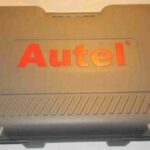The Autel Evo Nano and DJI Mini 2 are top contenders in the sub-250g drone category. This detailed comparison explores their features, performance, and key differences to help you choose the best drone for your needs. This review focuses on the Autel Evo Nano, highlighting its strengths and weaknesses compared to the popular DJI Mini 2.
Feature Comparison: Autel Evo Nano vs DJI Mini 2
One of the Evo Nano’s biggest advantages is its three-way obstacle avoidance. Currently, the Mini 2 lacks this crucial safety feature. This makes the Nano a safer option for beginners and experienced pilots navigating complex environments.
While both drones capture stunning aerial footage, the Nano offers 12MP DNG RAW photo capability, providing greater flexibility in post-processing compared to the Mini 2’s JPEG-only option. Autel boasts a 48MP JPG mode, but testing reveals it’s essentially an upscaled 12MP image. For best results, stick with the 12MP RAW files and upscale in post-production software.
A 100% crop comparison: 48MP JPG directly from the drone (left) vs. a 12MP RAW file upscaled using Super Resolution (right).
Both drones offer comparable flight times, but the Nano’s triple battery charging dock (included in the Premium Bundle) significantly reduces downtime.
The Autel Evo Nano Premium Bundle includes a convenient triple battery charging dock.
In terms of video, both drones shoot 4K, but the Nano now offers adjustable frame rates (24, 25, and 30fps), providing flexibility for filmmakers. Initial reviews noted a rolling shutter “jello” effect, but this appears to be primarily due to high shutter speeds in bright conditions. ND filters should alleviate this issue.
The Autel Evo Nano excels in various lighting conditions, capturing detailed aerial footage.
Flight Performance and User Experience
The Nano’s flight performance is generally smooth and stable, even in moderate winds. Recent firmware updates have unlocked its full speed potential (33.5 mph in Sport mode). However, obstacle avoidance accuracy may be reduced at higher speeds.
While the Nano’s automated flight modes (Rocket, Fade Away, Orbit) are available, their reliability needs improvement. Autel has recently added tracking features, a significant step up, although they may still require minor refinements.
The Autel Sky app provides a user-friendly interface, but be aware that app updates can reset your settings. Manual exposure control with on-screen zebra stripes makes it easy to achieve proper exposure. A recent update added a live histogram and LOG color profile, enhancing the user experience.
The 12MP DNG RAW files from the Evo Nano offer excellent detail and sharpness.
Conclusion: Which Drone is Right for You?
The Autel Evo Nano stands out with its obstacle avoidance, RAW photo capability, and adjustable frame rates. Its user-friendly app and recent feature additions make it a strong competitor to the DJI Mini 2. While the Nano is pricier, the extra investment is justifiable for users who prioritize safety and advanced features. The Mini 2 remains a solid choice for budget-conscious buyers primarily seeking basic aerial photography and videography. Ultimately, the best choice depends on your specific needs and budget.

